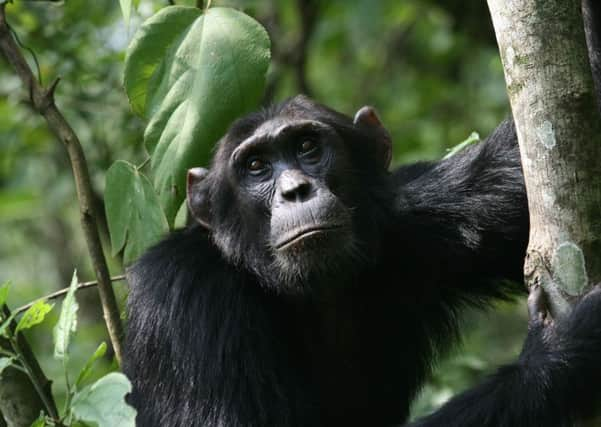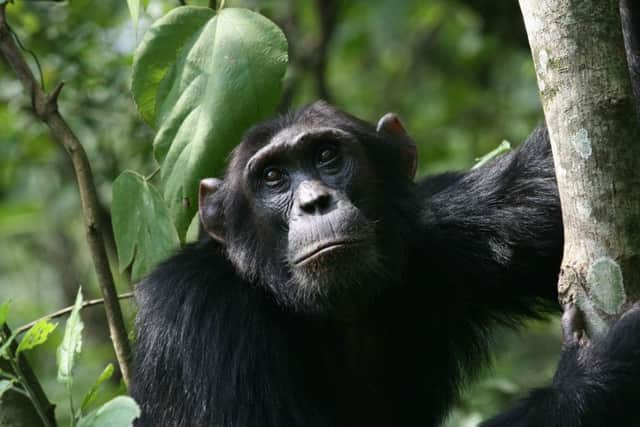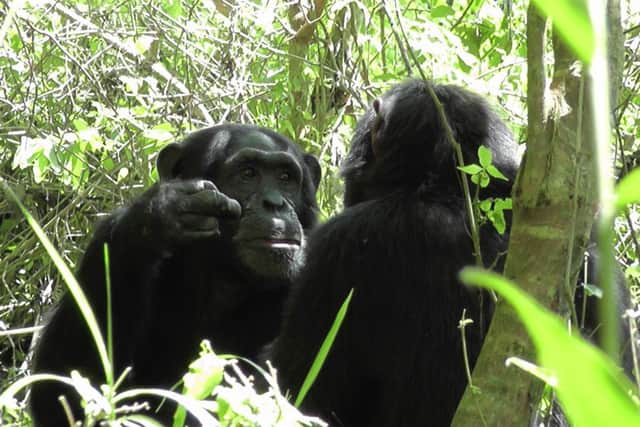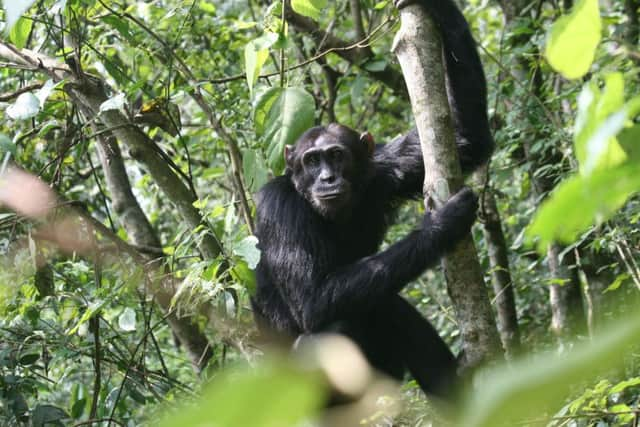Edinburgh Zoo Budongo project celebrates 10th year


But what many do not realise as they watch the chimpanzees swing from room to room is that it was inspired by an an important real life conservation project.
This year, the Budongo Conservation Field Station (BCFS) in Uganda celebrates its 25th anniversary, as well as the tenth anniversary of the involvement of the Royal Zoological Society of Scotland.
Advertisement
Hide AdAdvertisement
Hide AdLocated at the summit of the Albertine Rift in north-west Uganda, surrounded by over 100,000 acres of ancient tropical rain forest, BCFS brings together scientists from all over the world, local people and a community of nearly 700 chimpanzees.


The camp itself is a converted sawmill in the middle of the Budongo Forest and has hosted more than 150 researchers over the past 25 years, studying everything from chimp injuries to tropical forest bird ecology, land use changes and mating choices in male and female chimps.
Edinburgh Zoo provides around £60,000 of funding each year towards the project, with research particularly focused on the Sonso community of chimpanzees – named after the River Sonso which runs through its range – a group which has been studied continuously since 1990.
The project provides alternative livelihoods for residents, conducts forest edge planting research and works with local schools. It remains to this day one of the very few places in the world where wild chimpanzees are observed at close quarters in the wild.
Head of conservation programmes at Edinburgh Zoo, Sarah Robinson, spent seven days in Uganda in September to see first hand the impact the conservation project was having on the jungle and its chimpanzee population. She said: “The programme works with the local community to use the forest in a more sustainable way. One problem is people set up snares to catch antelope and forest pigs for food, but chimpanzees tend to get caught.


“Dr Fred Babweteera [director of BCFS] is out in the field. He started a ‘Goat Scheme’ community project in which local hunters are given goats to rear and breed provided they stop laying snares. He has also been able to look into the reasons why people are using the snares and educate people on the risks of eating bush meat.”
The project has been running in villages such as Nyakafunjo and Nyabyeya since 2001 and has seen a drop in number of snares being collected per month from 240 a month to just five.
There are many success stories from the BCFS project, but Albert, an ex-hunter who lives with his family in Kalongo village on the edge of the Budongo Forest, is one particularly impressive example and has left an impression on Sarah.
Advertisement
Hide AdAdvertisement
Hide AdAlbert built a raised goat house in which to keep his two goats, and also ensures that his animals have good sanitation and hygiene (a key requirement of the scheme). Like other ex hunters who take part, Albert also helps with snare removal in the forest.


More recently, Albert heard of other opportunities BCFS was providing to forest-edge communities and approached the project about planting rice. Not common in the area, rice is an expensive food crop and fetches good money. BCFS was able to give Albert a 30kg bag of seeds which he planted and was able to sell his crop for 600,000 Ugandan shillings, equivalent to one year’s income. He has been able to afford to pay for three of his children’s school fees for a term and has purchased solar panels to provide electricity for his home.
Sarah said: “It’s really fantastic to see what’s happening on the ground to get a real feel for it. You can read report after report but to see people out there, and what is happening for yourself, is brilliant.”
Another success story is of Ozale Vicent – a 24-year-old man who dropped out of school when he was eight years old to help his father set snares in the Budongo Forest. When BCFS started its ex-hunter scheme, Vicent and his father joined up, with Vicent expressing a desire to return to school. BCFS agreed to support him and, despite the age difference and years lost, he is impressing the conservation staff with his diligence and progress in the primary three class at the local school. In 25 years BCFS has grown and developed into one of Africa’s foremost conservation projects.